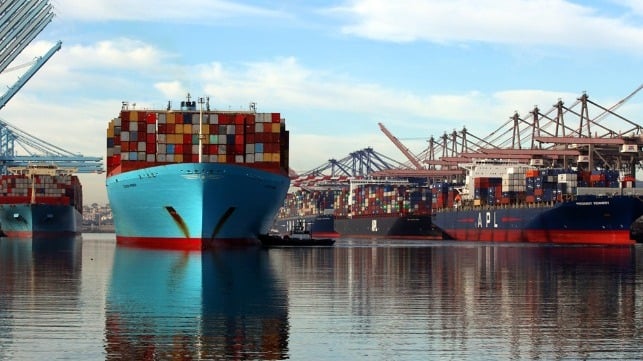Los Angeles Achieved Record February Despite Worsening Trade Imbalance

The Port of Los Angeles continued its unprecedented surge in volumes during February, reporting its seventh consecutive month of year-on-year increases and the best month of February in the 114-year history of the port. Driven by the spending by the American consumer, the port is seeing increases over its pre-pandemic volumes but cautions that the trade imbalance challenges port operations and the shipping lines and threatens the American economy.
“One year ago, global trade slowed to a crawl as the COVID-19 pandemic first hit China and then spread worldwide,” said Port of Los Angeles Executive Director Gene Seroka.” Today, we are in the seventh month of an unparalleled import surge, driven by unprecedented demands by American consumers.
The volume of containers moved at the Port of Los Angeles in February was up 47 percent versus the levels a year ago at the onset of the pandemic. However, they also highlighted that this year’s volumes were 10 percent over the previous highs recorded in 2018. While the projections are for continuing high volumes through the spring and into the summer, the port is also monitoring consumer spending and a possible shift in buying patterns back to more services which could impact the import levels. Currently, they are forecasting volumes of approximately 830,000 TEUs in the coming months.
The data also highlights the trade imbalance the port is experiencing. Loaded imports made up over 50 percent of the total volume moving through the port in February, with the volume increasing 53 percent versus 2020. The volume in empties leaving the port doubled to over 285,000 TEUs as carriers rush to get the boxes to Asia to meet demand.
“The lopsided trade imbalance we are witnessing is now at historic levels,” said Seroka. The ratio of imports to exports has reached four-to-one with loaded exports down 25 percent in February to just over 101,000 TEU. According to Seroka, export levels at the port are nearing 15-year lows with the last time the port fell below 100,000 TEU was in February 2006. Export volumes have been down in 26 of the past 28 months at the Port of Los Angeles.
Seroka, who has been vocal in his past reports about the problems the trade imbalance creates, is calling for a coordinated national export plan to restore balance and get more American goods to overseas buyers. The trade imbalance complicates port operations, makes it difficult for the shipping lines that have strong one-way demand, and is hurting the health of the US economy according to Seroka.
Despite the challenges, the port is continuing to run smoothly and the strong volumes created a 29 increase in labor shifts last month and a 14 percent increase for the four-year average. Efforts are continuing to quickly vaccinate workers in the port to maintain the labor force.
“Our challenges now are focused on getting port workers vaccinated and assisting stakeholders in managing this heavy flow of cargo,” Seroka added. “We will do everything we can to help get shipping lines back on schedule. It’s critical that we clear the backlog of cargo and return more certainty to the Pacific trade.”
The Port of Los Angeles is expanding its data tools to further assist in managing the flow of containers through the port. During February, a total of 78 cargo vessels arrived, including four extra loaders. On March 16, the anchorage was down to 17 vessels, the lowest level since December 24, 2020, but time in the anchorage and dwell time for containers while both down slightly last month remains at high levels.
To continue to clear the backlog Seroka said the port needs to complete its vaccination program for everyone in the port from dockworkers to truck drivers. They also need to do a better job of getting cargo off the docks and managing the flow. The port is working with all of its stakeholders and introducing additional data management tools which it believes will assist in further clearing the backlog.
